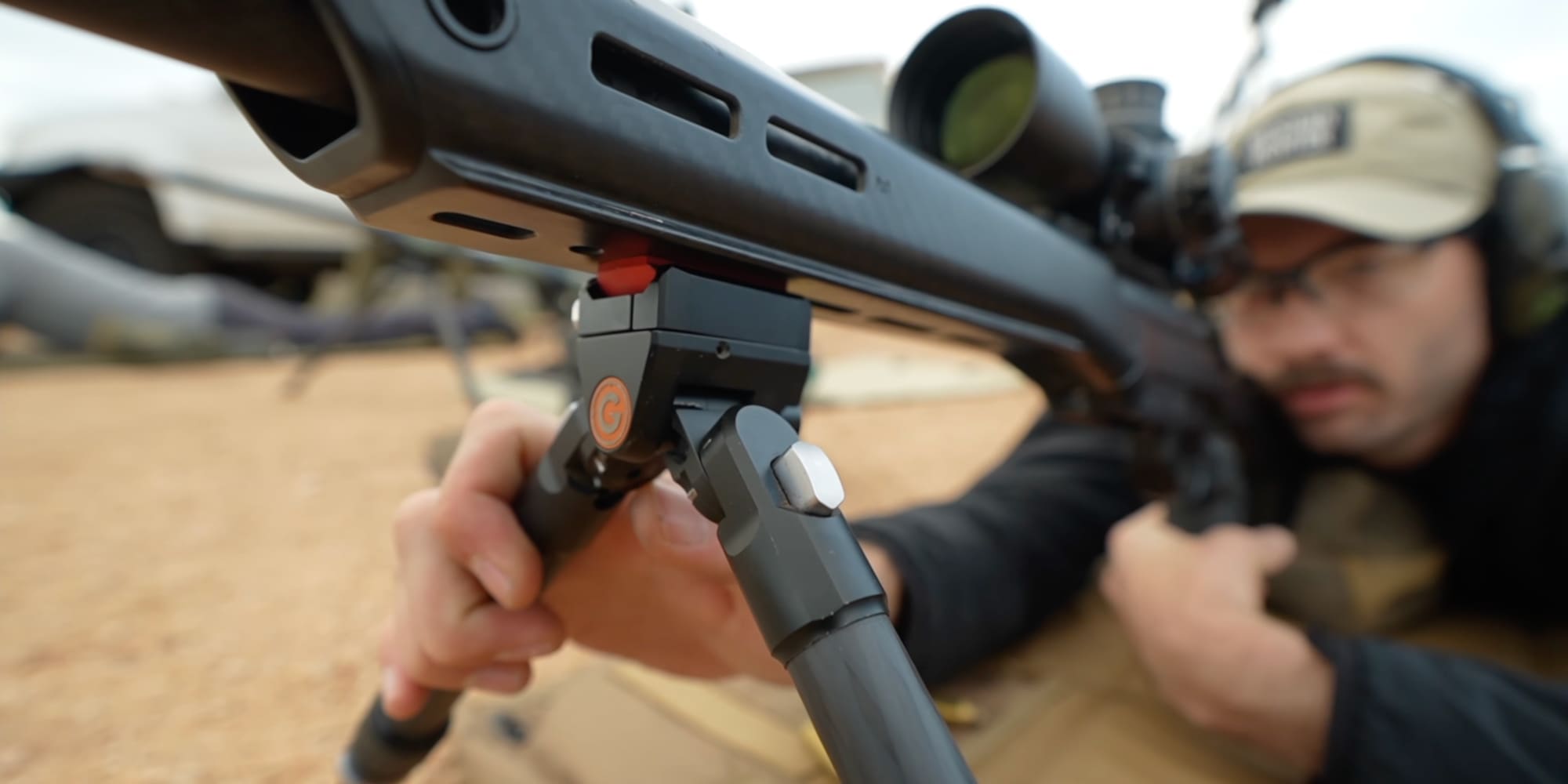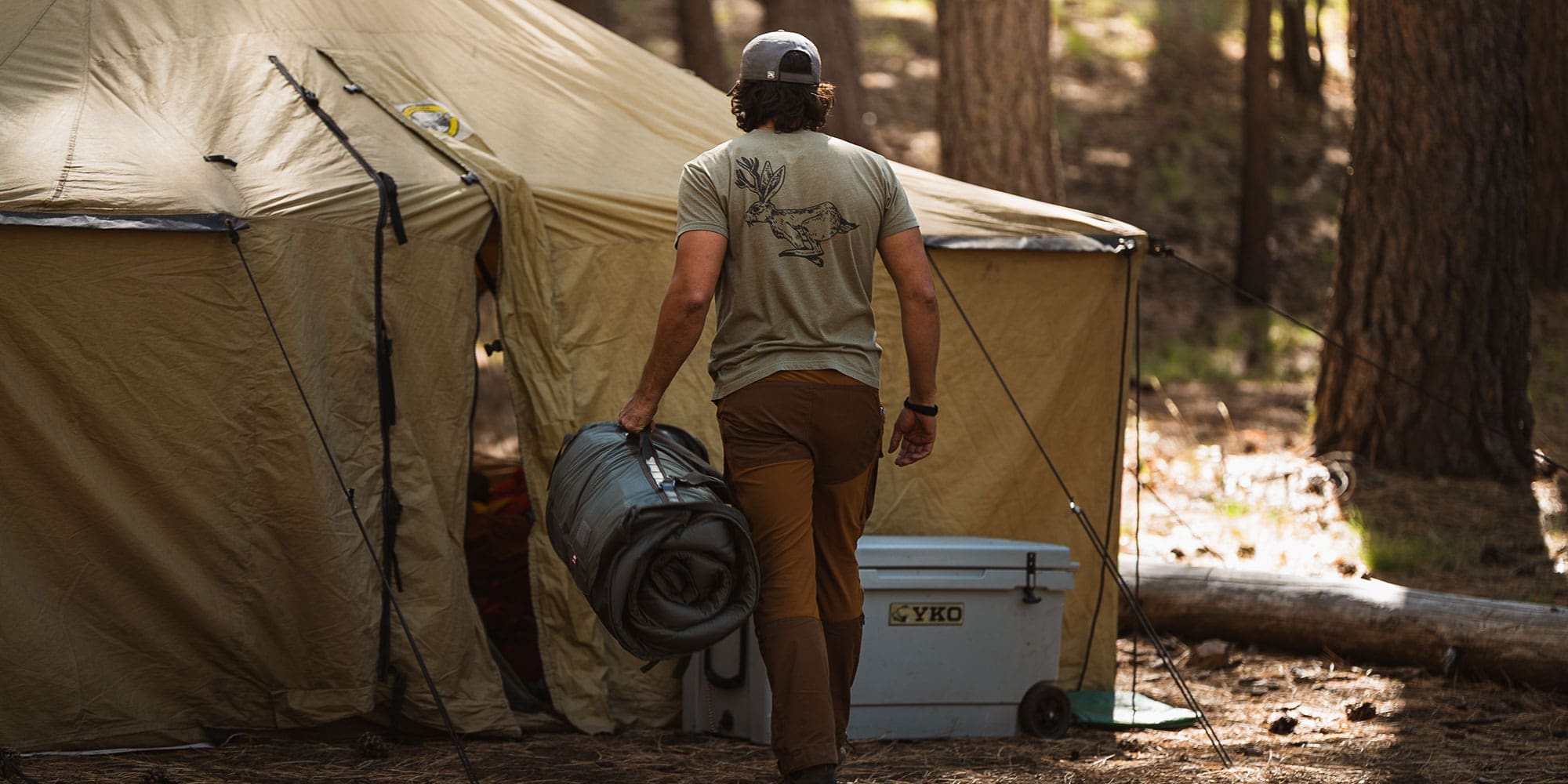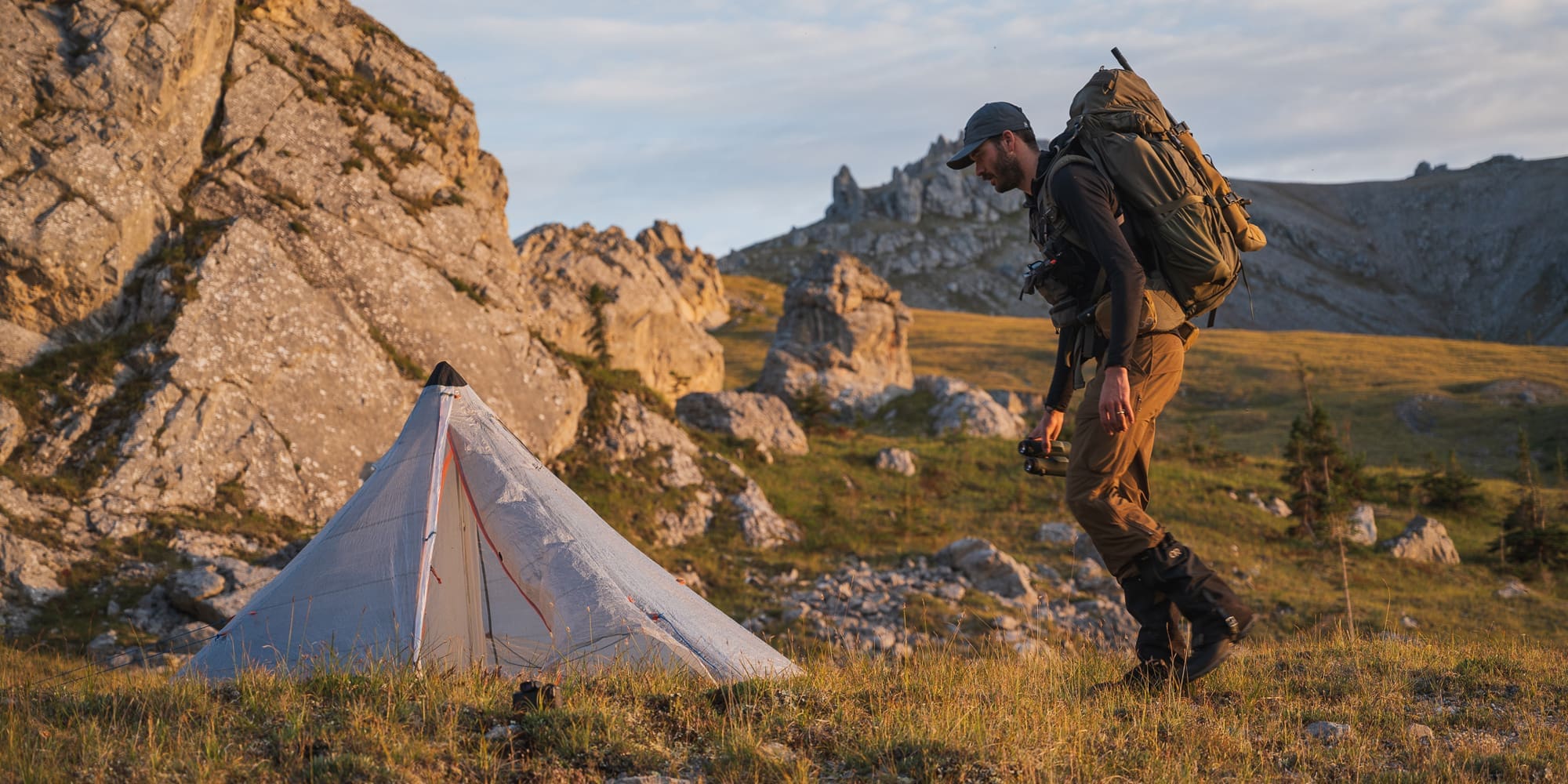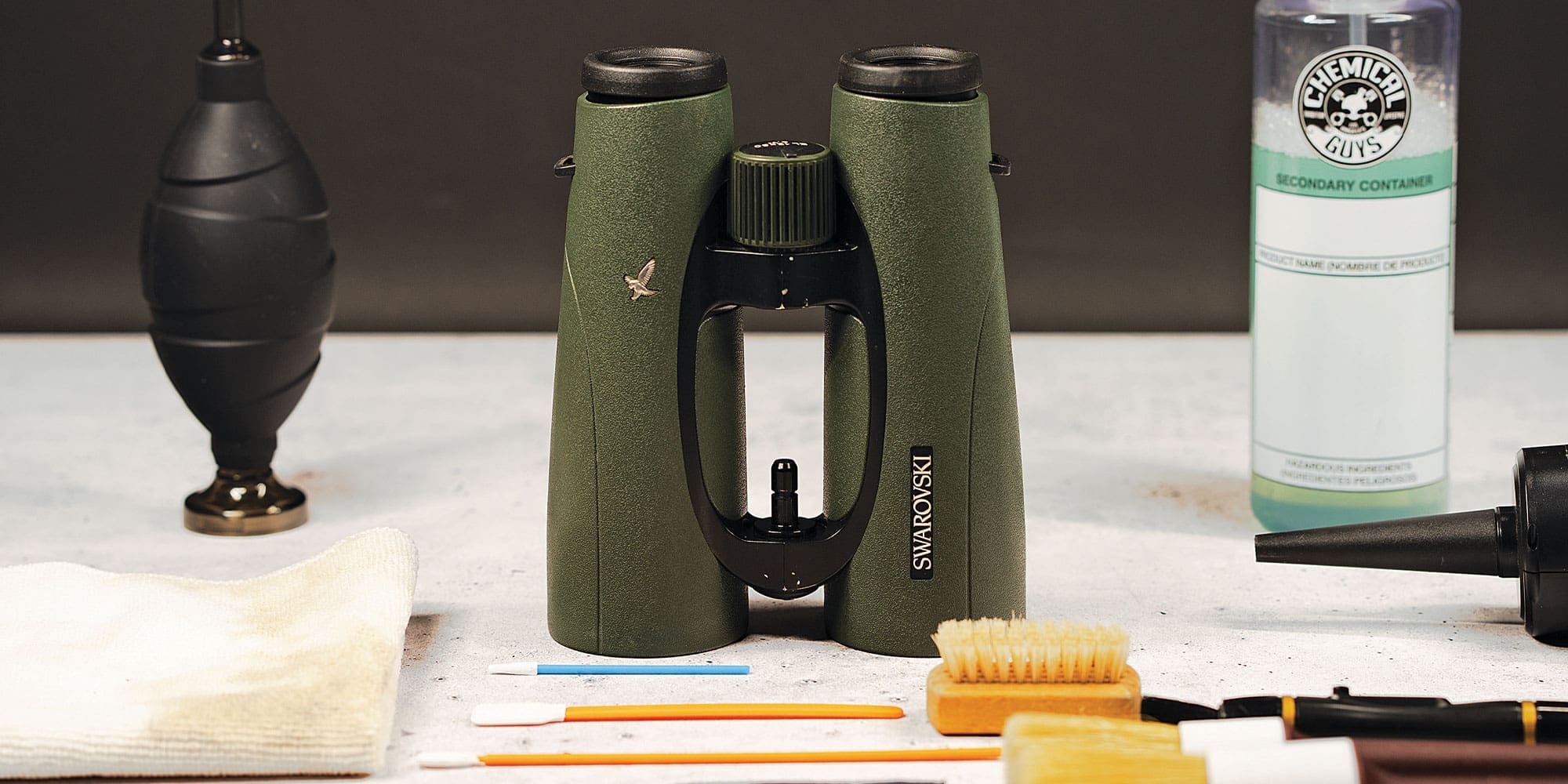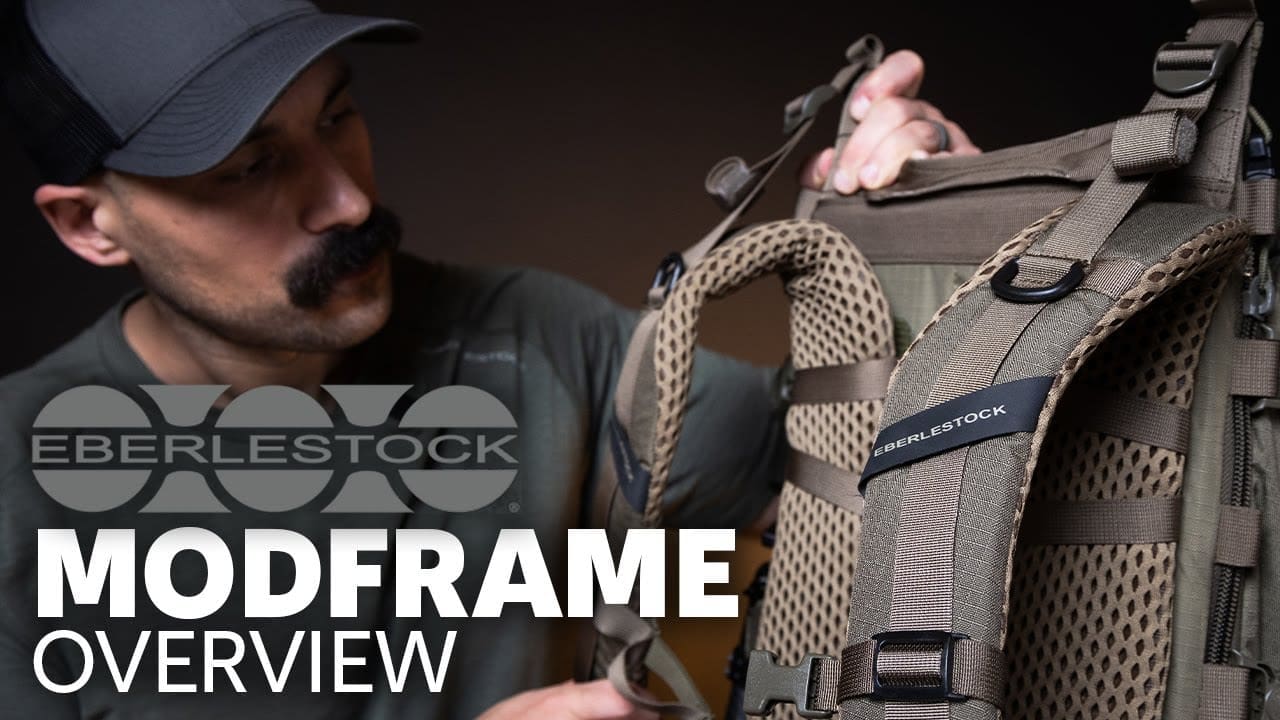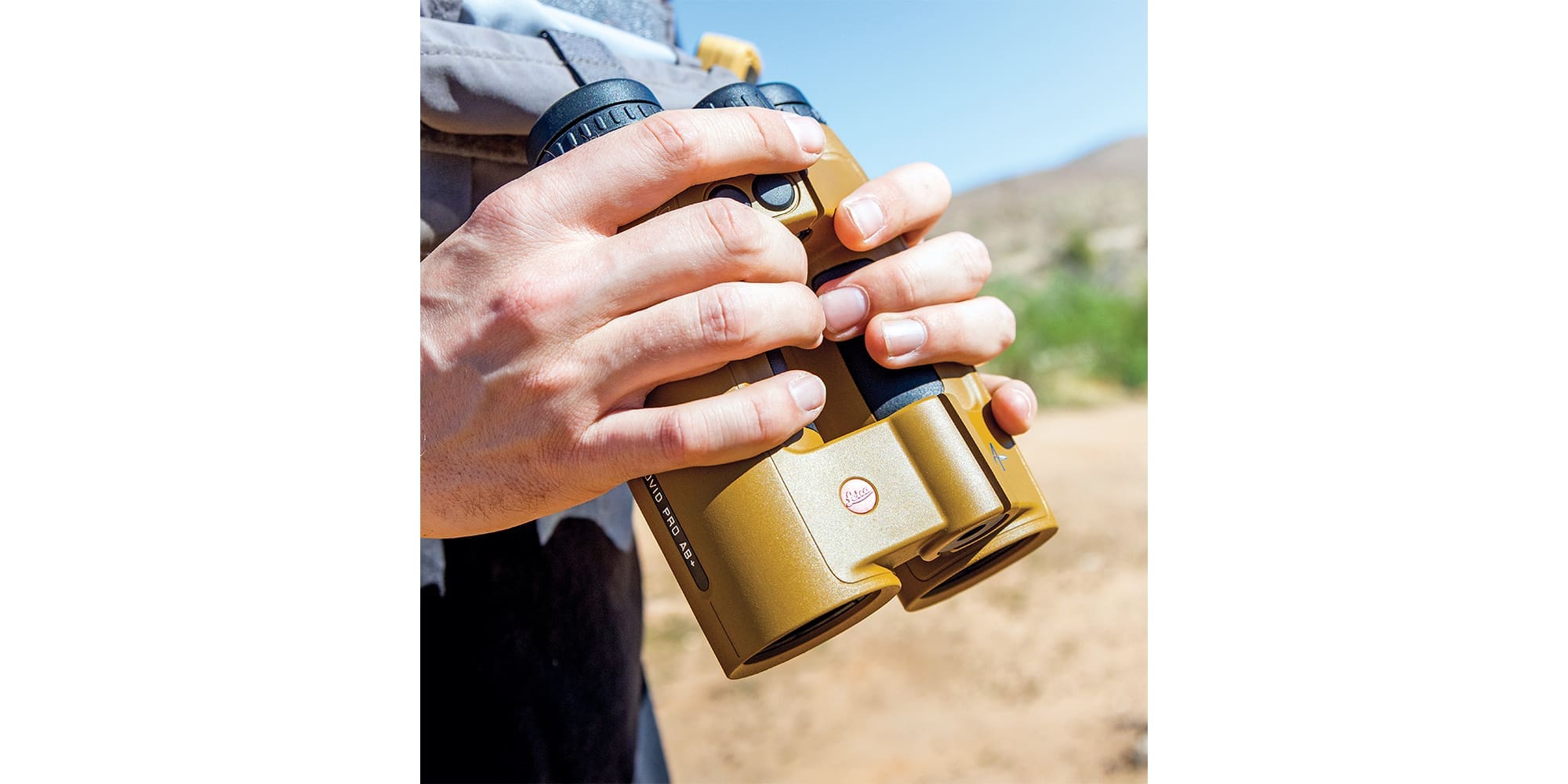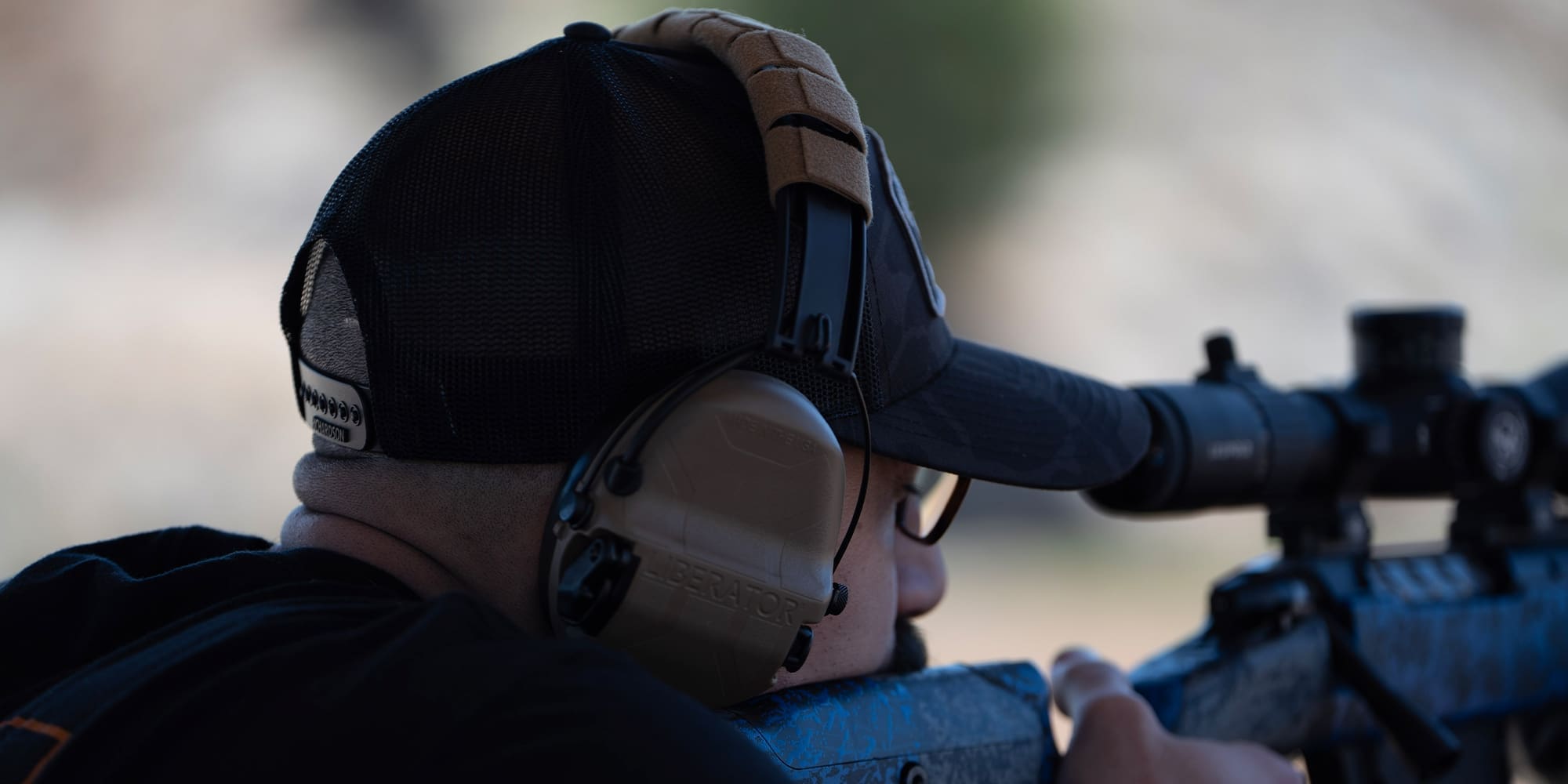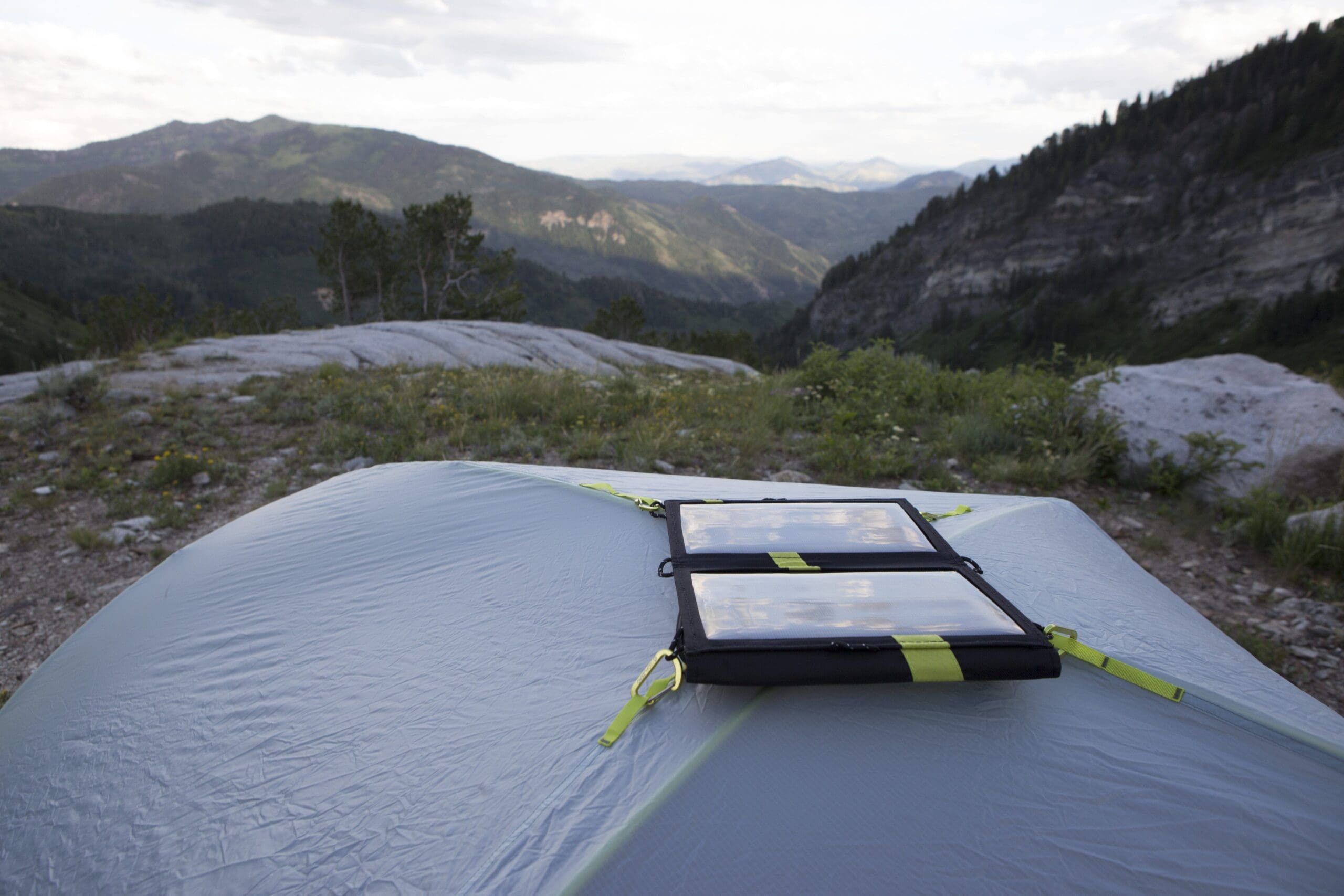
NOTICE: Certain links on this post may earn a commission for Western Hunter Magazine from Amazon or our other affiliate partners when you make a purchase. Thank you for your support.
Backcountry Portable Power Sources
No longer a gimmick; today’s Western hunter needs dependable portable power sources.
In today’s technological age, I’d bet that 99% of all western hunters pack some sort of electronic device in the field. Phones, flashlights, cameras, PLB’s, and GPS, among other things, have hunters more equipped than ever. Powering these critical pieces of equipment makes our hunt more enjoyable and can even be the difference between life and death. Thankfully, there are a few companies with energy products dedicated to backcountry hunters.
Filming our TV show The Western Hunter in the manner we do would be virtually impossible without these modern energy storage devices and efficient solar panels. We no longer have to pack up to 10 lbs. in extra batteries for a weeklong backpack trip, nor do we have to pack a noisy gas-guzzling generator when we’re tent camping. Understanding the basics of solar generation and a little experimenting with product combinations keeps us powered up, yet light on our feet.
There are two basic items you must have for adequate backcountry portable power sources. Depending on your needs, you may want to have multiple batteries of different sizes. As you might expect, the more solar panels you have, the more electricity you can generate. Hopefully, by the end of this article, you’ll have a fairly accurate idea about which system will work best for you.
How Portable Power Sources Work
There are two basic components to portable power sources - the solar panel and a battery pack (or solar generators as they're sometimes called). While solar panels can be used alone to charge USB-powered devices, it's not typically recommended.
In order to actually charge something using a solar panel only, the device being charged can't be used for several hours during daylight hours when you typically want to use it - assuming you have adequate sun during that block of time. Instead, connect a solar panel to a battery pack to store gathered sunlight for use at nighttime when nothing is in use.
Using battery packs also provides a lot more versatility for camp lighting, as most manufacturers offer ultra-bright and compact LEDs that can easily replace lanterns and flashlights for basecamp.
These battery packs are rated in Watt-hours (Wh) to determine their storage capacity. Power consumption for everything from TVs to cell phone chargers is rated in Watts, meaning it uses X amount of watts per hour to run. Essentially, dividing battery capacity (Watt-hours) of a battery pack by the power consumption of a product (Watts) will give you the amount of time a product will run on that battery pack.
All manufacturers rate how long a solar panel will take to charge a given battery pack, but it's important to remember that those specs are based on ideal sun conditions. During the fall, sunlight is rarely optimal. Also, proper/improper positioning of solar panels greatly affects their ability to produce power. By simply laying a panel on the ground versus propping it up on a 45-degree angle can double charge times, so take the time to ensure your panels are positioned to capture the most amount of sun possible.
A good rule of thumb is to try to reduce the time needed to recharge a battery pack to 8 hours or less to ensure you always have reliable portable power sources.
Because keeping all of our equipment powered is critical, we don’t like to bring the bare minimum of battery power. In the Mountain West, you never know when a storm might roll in and shut down your solar system while you’re out hunting.
Once everything is charged at night, we hope to still have at least 50% power on each battery, with the goal of charging it back to 100% the next day. So, we choose which size solar panel we pack based on its ability to charge a particular battery 50% in approximately 8 hours.
Batteries are evolving almost daily! A few years ago, electric cars were futuristic dreams but now we have full-size sedans with 100-mile-plus ranges. This is all due to an immense amount of money and research being dumped into battery technology. The research goal is to make lighter batteries with increased storage capacity, and it just happens that is exactly what we hunters desire as well.
Lithium-ion battery technology is quickly emerging as the favorite for several reasons. It’s significantly lighter weight, less affected by cold temperatures, has 4x the life expectancy, and is able to deliver far more power in a short amount of time. However, it is more expensive.
To illustrate the difference in weight lithium-ion offers - the Goal Zero Yeti 150 weighs 12 lbs., while the Inergy Solar Wolverine weighs only 3 lbs., yet they have the exact same power rating. That significant weight difference does come at a cost - the Wolverine is $400 MSRP while the Yeti 150 is $229 MSRP.
Battery Maintenance
For battery storage, it's best to fully charge the battery, then unplug it and store it. We recommend recharging it every 4-6 months. The battery will very slowly discharge over time, which is actually perfect. It's best not to store the battery at full charge all the time, as that can decrease the life expectancy of the battery. Speaking frankly, it'd be best to store the battery at 50-60% charge and then fully charge it before you need it - but who is ever going to do that?
Another awesome accessory to help it along is to use a car charger. Oftentimes, basecamp is accessible with a truck, and if you're hunting in the late season or rainy weather, it's nice to be able to top off the battery when in transit or just leaving it plugged in overnight.
Conclusion
Thanks to the “living off the grid” movement and the alternative energy push, backcountry energy storage and generation is evolving almost daily. This is a boon for expedition-style hunters and for basecamp as well.
Keep in mind that the internet makes it easy for companies to create nice websites and instantly appear legitimate. Do more research, because many of those not listed here will disappear as fast as they appeared.
Also, many companies in this industry are afraid of associating too closely with the hunting community, some out of ignorance and some out of fear of retribution from the anti-hunting community. By purchasing equipment from a company that has a track record of success and embraces the needs of the hunting community, you dramatically increase your odds of being satisfied with your purchase.
Recommended Portable Power Sources
There are literally dozens of companies making solar panels and/or batteries, but not all of them are worthy of being carried into the backcountry. I’ve put together this relatively short list of products that I have used and would trust on an extended hunt.
Goal Zero
We’ve been using Goal Zero portable power sources as the primary charging products for The Western Hunter from the very beginning, even before they came on as a sponsor. This innovative company is constantly bringing out new products, so even if you looked at their website just a few months ago, you may want to look again. Goal Zero makes dozens of cool products, but here some of my favorites.
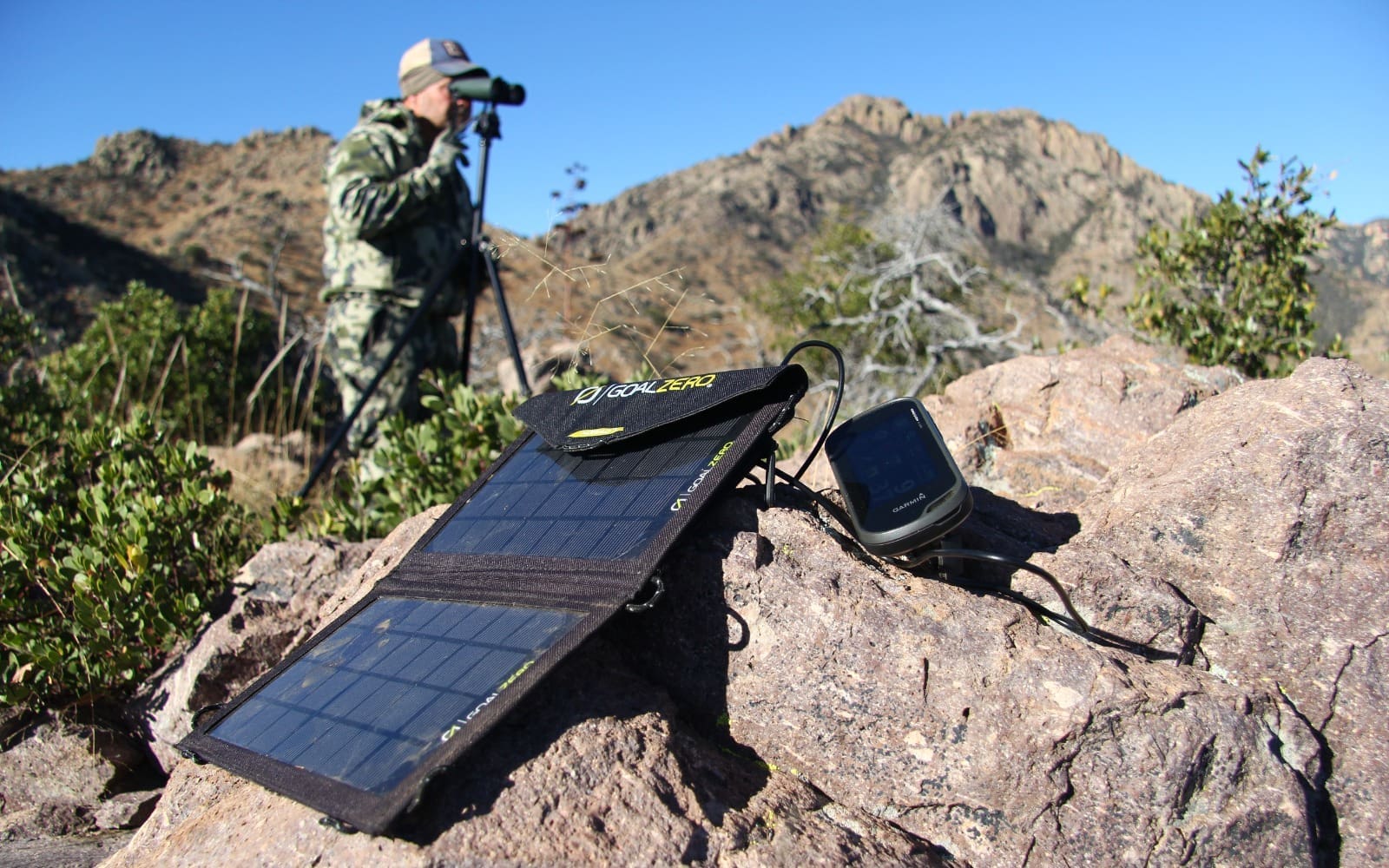
Venture 30:
The Venture 30 stores 30Wh of power in a rubber-armored and waterproof shell, even while in use! The built-in USB charging cord stays hidden when not in use and is immediately available when needed. There are dual USB ports so you can charge two devices simultaneously. The built-in microprocessor selects the fastest charge profile for your device.
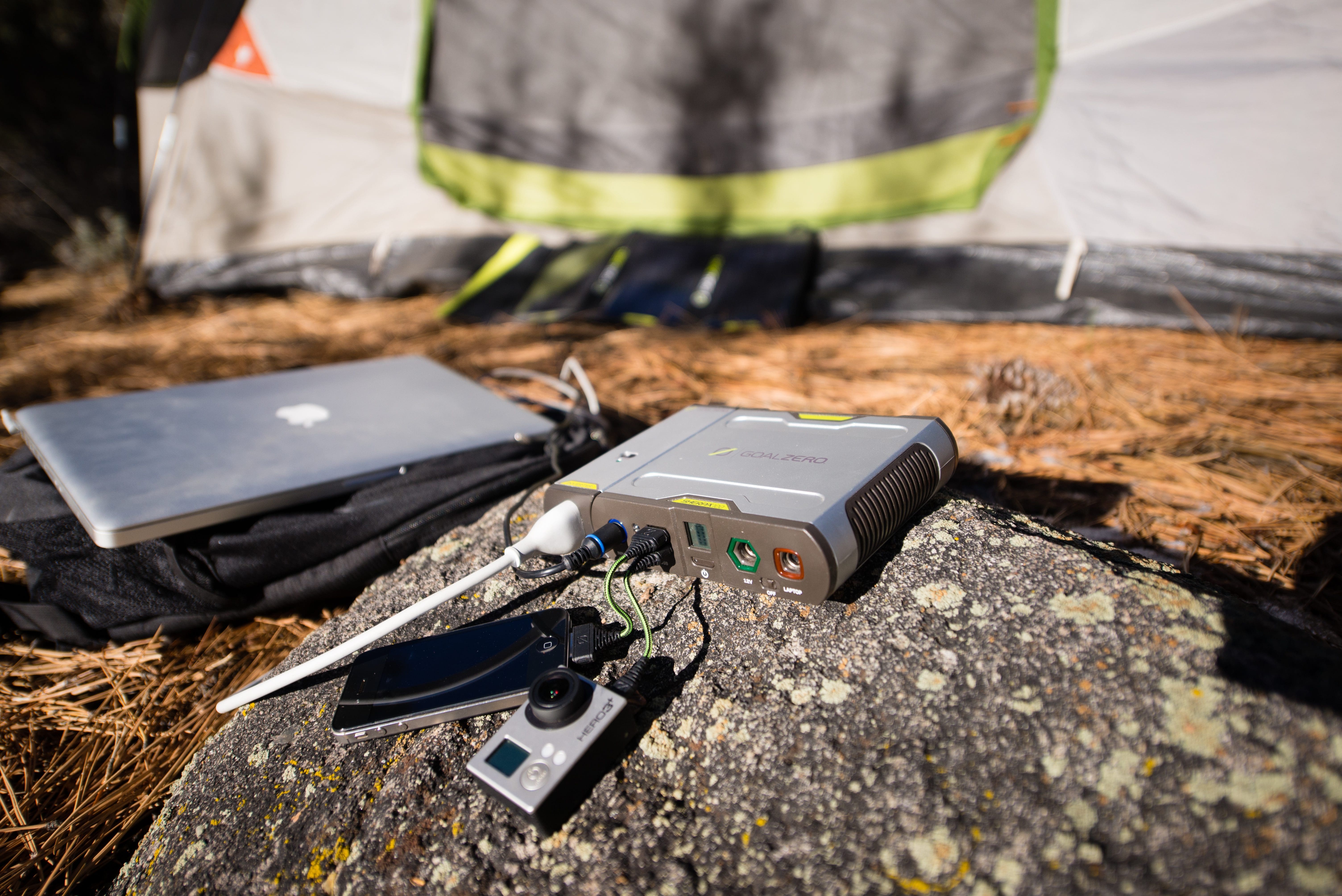
Sherpa 50 & 100:
If you’ll need to charge multiple devices, camera batteries, and light up a backcountry camp, then the Sherpa 50 or Sherpa 100 will be your workhorses. If we forget our Sherpa, it’s time to turn around, go home, and start again it’s that important. As the name implies, the Sherpa 50 can store 50+Wh and the Sherpa 100 holds 98Wh (any device storing 100Wh or more cannot be carried on the airlines).
The Sherpa line is not waterproof, so keep it out of the rain and make sure all ports are dry before you use them. If you plan to charge DSLR batteries, make sure and purchase the Sherpa 110V AC inverter ($50).
Nomad 5:
Goal Zero offers a full selection of packable solar panels. The new Nomad 5 is a perfect companion for charging 30Wh batteries and smaller devices like cell phones and headlamps.
When charging a cell phone directly from a solar panel, the phone will stop accepting the charge if the current falls below a certain threshold, but the Nomad 5 contains software that senses that the battery isn’t fully charged and will restart the charging when enough current is available. This is a big deal during partly cloudy days.
Nomad 10:
If you need to charge batteries of 50Wh or larger, the Nomad 10 panel is a wise choice. This panel will recharge the Sherpa 50 from 50% to 100% in less than 8 hours. Nomad 10 panels can be chained together to provide additional power to a single device.
Inergy
Inergy is a relatively young Idaho-based company. They have a strong focus on building portable power sources for the hunter, which is always a plus.
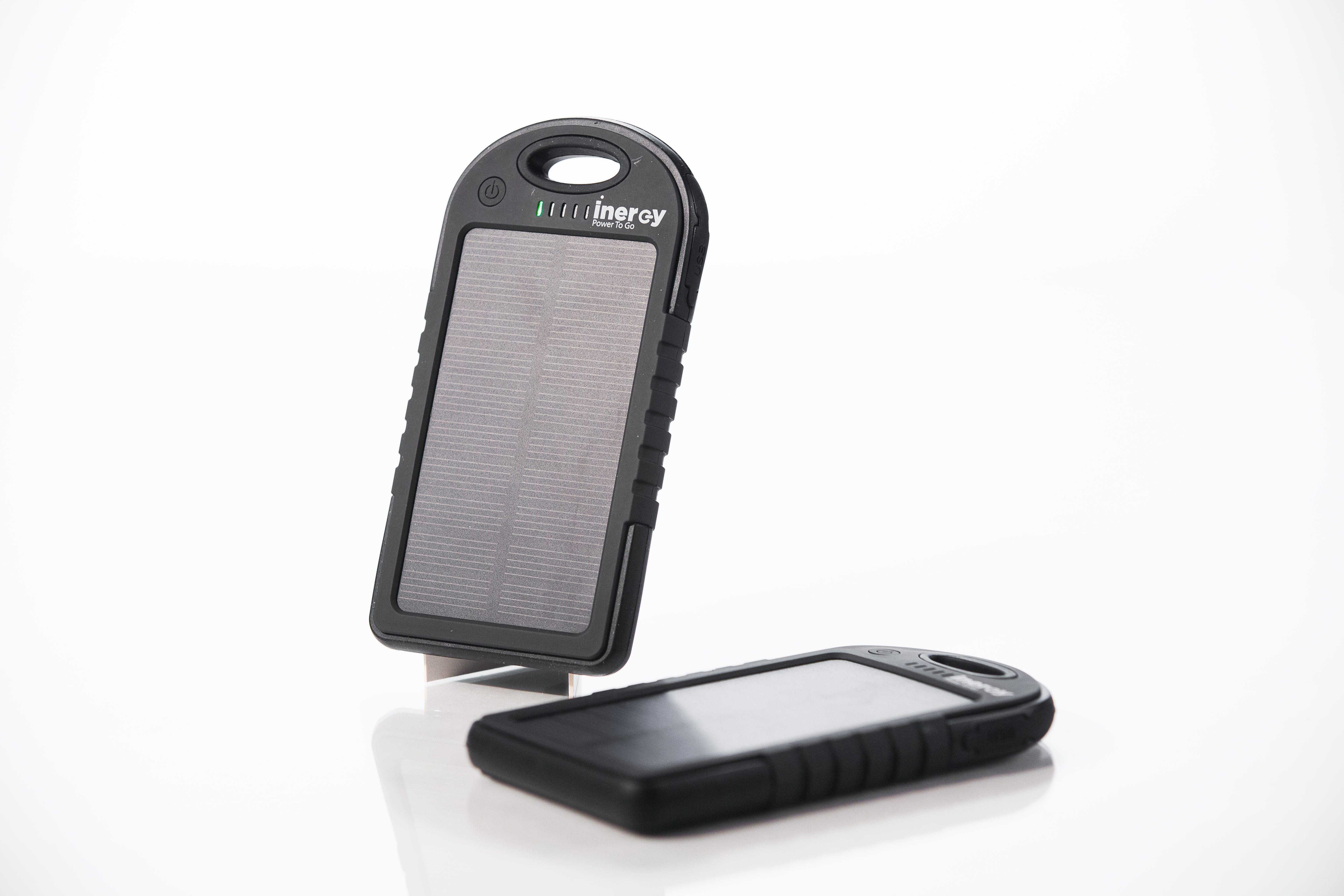
Spark Xtreme:
Their most compact battery bank is the Spark Xtreme. All of the internal components of this battery have a protective coating that allows them to work when wet. With 5,000mAh of storage, this will recharge a typical cell, GPS, or small camera twice. With the built-in trickle charge solar panel, you should be able to attach it to your pack and keep it charging at all times.
Power Bar:
The Power Bar stores up to 50wH of power in a lightweight, rubber-armored package. This little powerhouse comes with a set of alligator-style clips, allowing you to jumpstart a boat, ATV, or even a full-size gas truck.
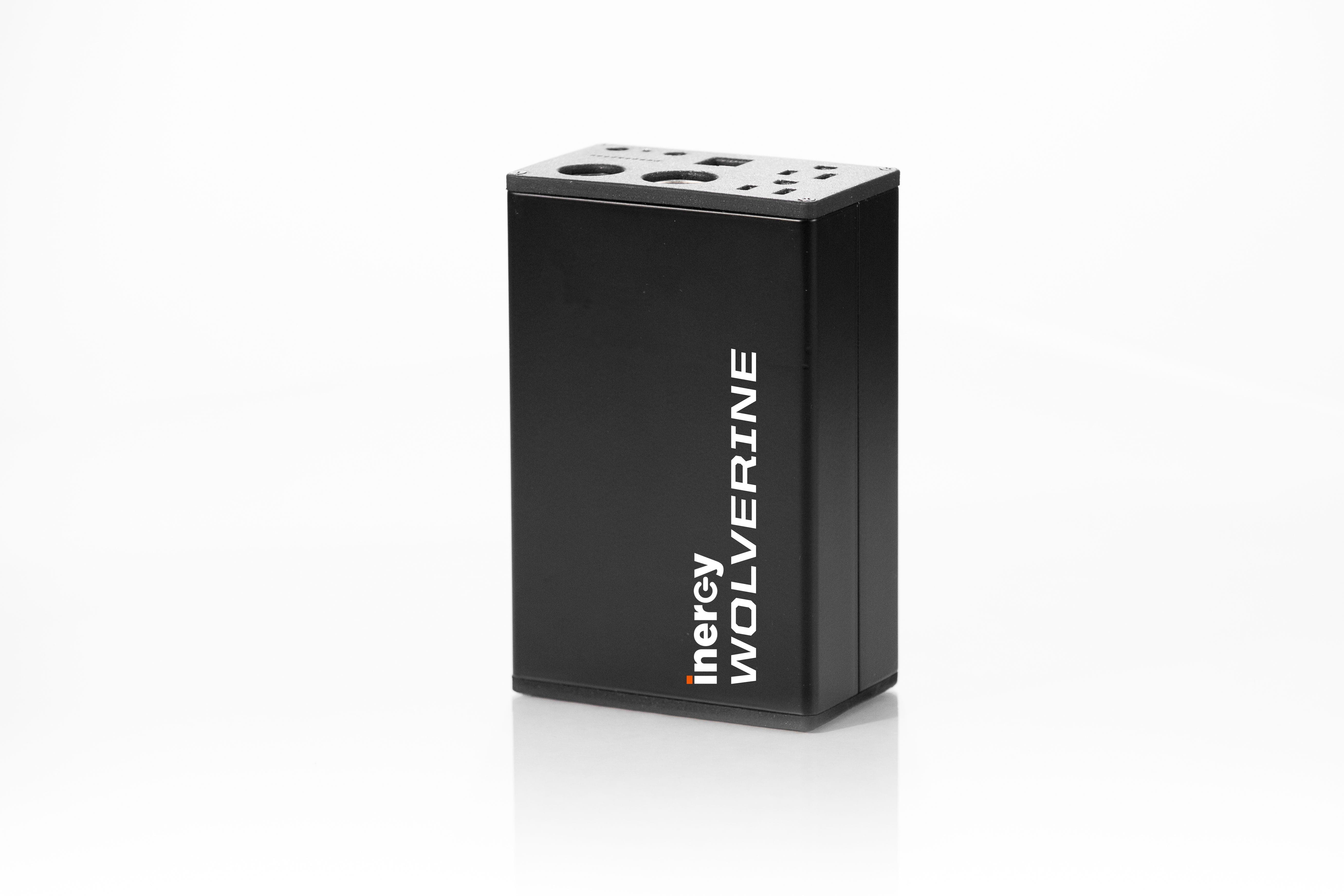
The Wolverine:
The Wolverine is a powerful 170-watt lithium-ion generator weighs in at less than 3 lbs., making it the lightest product in its class. The built-in inverter delivers power to two 110V AC outlets (200W continuous, 400W surge max), along with a 12V DC car socket, two USB ports and a 12V DC port for lights.
Dark Energy:
Dark Energy basically makes one product, but it’s a good one! The Poseidon is waterproof inside and out and each unit is “destruction tested.” The compact 10,000mAh battery weighs just 9 oz. The Poseidon comes with a paracord micro-USB charging cable and carabiner.
MyCharge:
The All Terrain+ from MyCharge is a military-grade, waterproof, temperature-proof, and shockproof battery that will stand up to serious backcountry use. The All Terrain+ can charge two USB devices simultaneously and comes with a wrapped recharging cable. It doesn’t have a built-in back-up flashlight, but at $59.99, it’s the least expensive backcountry-worthy battery on the market.



